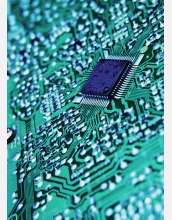U.S. Records Yet Another Trade Deficit in Technology Product Markets

U.S. technology product imports exceeded exports for the first time in 2002 starting a trend that left a $38.3 billion trade deficit in 2006 after reaching a high of $44.4 billion in 2005.
A recently released National Science Foundation (NSF) report, titled Annual Deficits Continue for U.S. Trade in Advanced Technology Products, concludes technology market deficits result from a growing U.S. trade imbalance with some Asian nations.
"It's one more indicator of Asia's rising science and technology strength," said Lawrence Rausch, senior analyst in the Science Resources Statistics division at NSF. "Technology product trade deficits with Asia, especially with China, Malaysia, and Japan overwhelm U.S. trade surpluses and relatively balanced trade with many other parts of the world."
In 2006, Asia supplied 60 percent of all U.S. imports of advanced technology products. Europe supplied more than 20 percent, and North America more than 15 percent.
Of the Asian nations, the largest U.S. supplier of technology products was China, which replaced Japan as the largest supplier in 2003. By 2006, China was the source for 25 percent of all U.S. technology imports while Japan was a distant third, supplying only 9 percent.
"U.S. trade in products with high technology content had been a strong market segment where the United States historically exported more than it imported," Rausch said.
In 2002, however, technology imports exceeded exports for the first time since the U.S. Census Bureau began tracking the market segment in the mid-1980s. U.S. technology trade deficits have continued every year since.
The Census Bureau's advanced technology product classification system tracks imports and exports of new or leading-edge technologies in 10 major areas including biotechnology, life science technologies, and information and communication technologies.
NSF suspected and found a trading surplus in computer software products and created an 11th technology area to account for it. In its technology product classification system, the Census Bureau includes computer software within the information and communications technology area.
Throughout most of the 1990s, the technology product classification system recorded trade deficits in only 2 of the 11 technology areas: information and communications and optoelectronics, technology that merges the sciences of electronics and optics.
By 1999, rising imports of life science technologies produced a trade deficit in a third technology area. After 2000, U.S. imports exceeded exports in five of the 11 technology areas.
"The comparative advantage held by U.S. advanced technology producers has narrowed considerably in a matter of a few short years, with the overall trade balance in this market segment turning negative fueled by large trading deficits in information and communication technologies, life science technologies, and optoelectronics. On the other hand, in 2006, the United States continued to export considerably more than it imported in two technology areas: aerospace and electronics. We'll need to continue to watch these trends," said Rausch.
Source: NSF





















